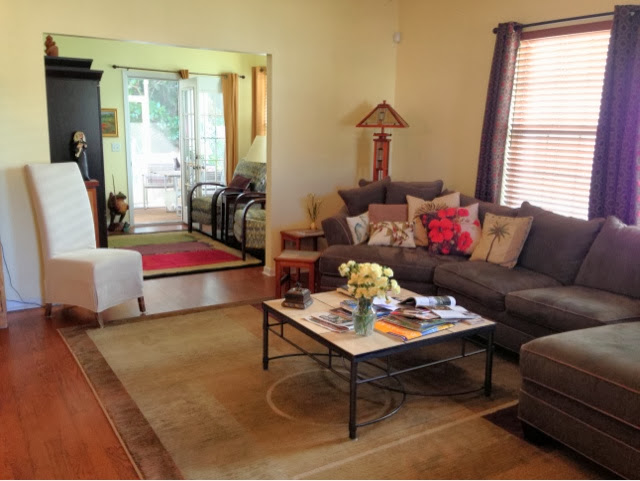As we drove down the highway towards Savannah, we made a quick stop at a roadside fruit stand advertising boiled peanuts. Boiled peanut shacks are all up and down the roads, but we had yet to try them.
Let me introduce Mrs. Barbara Pinckney. Just as we were leaving the stand with our produce and peanuts, I realized I had no idea how to eat them. Mrs. Pinckney was parked next to us, having just left church. I asked her if she could tell me about boiled peanuts and she was gracious enough to get out of her car and give us a demonstration - and a cooking lesson, in case we want to make them back home (boil green peanuts in plenty of heavily salted water for 2 hours, then let sit in hot water at least an hour and serve right out of the hot water).
When we parted, Mrs. Pinckney warmly shook my hand and sent us off with a parting "Hope you have a blessed Sunday."
When she told me her name, I recognized it immediately - we ate lunch on Pinckney Street in Charleston Saturday, right around the corner from the Pinckney Hotel. Major General Charles Cotesworth Pinckney was John Adam's vice-presidential running mate for the Presidential election that elected Thomas Jefferson. He was also a major plantation owner, and part of his plantation is now the Pinckney Island Wildlife Refuge.
Back at the fruit stand, we enjoyed buying some beautiful local produce - these heirloom zebra tomatoes are going to go with some pear and gorgonzola ravioli we bought.
Relish, pickles, and jams are row upon row. We have our 50 kinds of salsa, but they have Chow-Chow and pickled everything, including watermelon rind.
Never been a big grits fan, but Magnolias Restaurant made me a convert when I had their shrimp and sausage in Tasso Gravy over creamy grits.
Sweet little bouquets of flowers were tempting.
Before we departed John's Island (this is where our home exchange was located - 20 minutes outside Charleston), we stopped to see the famed Angel Oak. This tree is the biggest tree east of the Mississippi. It may be the largest live oak tree in the world. Its canopy stretched 180 feet. It is pretty hard to convey how majestic it is.
I am including a picture of our home-away-from-home on John's Island. Many friends are curious what it is like to do a home exchange... Each day as we drove "home" along River Road, in a tunnel of giant oaks draped with Spanish moss, we were very happy to have this lovely, comfortable home to hang our hats. We stayed in touch regularly with the Kennedys who were enjoying SLO with friends.
Next post...Savannah!



























































